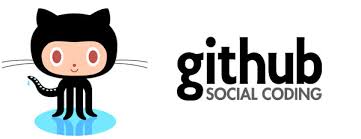This notebook was written by Dr. Randal S. Olson from GitHub. In this notebook, Randal is going to go over a basic Python data analysis pipeline from start to finish to show you what a typical data science workflow looks like. In addition to providing code examples, he also hopes to imbue in you a sense of good practices so you can be a more effective — and more collaborative — data scientist. Randal will be following along with the data analysis checklist from The Elements of Data Analytic Style, which he strongly recommends reading as a free and quick guidebook to performing outstanding data analysis.
In the time it took you to read this sentence, terabytes of data have been collectively generated across the world — more data than any of us could ever hope to process, much less make sense of, on the machines we’re using to read this notebook.In response to this massive influx of data, the field of Data Science has come to the forefront in the past decade. Cobbled together by people from a diverse array of fields — statistics, physics, computer science, design, and many more — the field of Data Science represents our collective desire to understand and harness the abundance of data around us to build a better world.
Table of contents:
To check out all this information, click here. For more articles about machine learning, click here.
DSC Resources
- Career: Training | Books | Cheat Sheet | Apprenticeship | Certification | Salary Surveys | Jobs
- Knowledge: Research | Competitions | Webinars | Our Book | Members Only | Search DSC
- Buzz: Business News | Announcements | Events | RSS Feeds
- Misc: Top Links | Code Snippets | External Resources | Best Blogs | Subscribe | For Bloggers
Additional Reading
- What statisticians think about data scientists
- Data Science Compared to 16 Analytic Disciplines
- 10 types of data scientists
- 91 job interview questions for data scientists
- 50 Questions to Test True Data Science Knowledge
- 24 Uses of Statistical Modeling
- 21 data science systems used by Amazon to operate its business
- Top 20 Big Data Experts to Follow (Includes Scoring Algorithm)
- 5 Data Science Leaders Share their Predictions for 2016 and Beyond
- 50 Articles about Hadoop and Related Topics
- 10 Modern Statistical Concepts Discovered by Data Scientists
- Top data science keywords on DSC
- 4 easy steps to becoming a data scientist
- 22 tips for better data science
- How to detect spurious correlations, and how to find the real ones
- 17 short tutorials all data scientists should read (and practice)
- High versus low-level data science
Follow us on Twitter: @DataScienceCtrl | @AnalyticBridge

